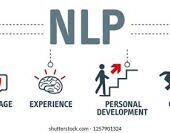Enhancing User Experience (UX) with Keyboard Accessibility
Keyboard accessibility plays a crucial role in creating more inclusive and scalable products. While many individuals can navigate a computer using a mouse, there are those with mobility- or dexterity-related accessibility needs who rely on alternative devices like head wands or switch controls. The foundation of these alternative interactions is keyboard access. Enhance UX With Keyboard Accessibility for greater user experiences.
In a world where approximately 16% of the population has at least one disability, prioritizing keyboard accessibility becomes paramount. Salesforce, a company committed to equality, incorporates this principle into its product design, ensuring that every user, regardless of their abilities, can effectively engage with their products.
Enhance UX With Keyboard Accessibility
But what does keyboard accessibility entail? Essentially, it means that any action achievable with a mouse should also be accomplishable with a keyboard. This foundational principle accommodates various user needs, such as screen readers for the blind or voice commands. The consistent factor across these diverse modes of interaction is the reliance on keyboard access.
Let’s explore an alternative interaction pattern called “click to create” that serves as a keyboard-accessible substitute for drag-and-drop functionalities, addressing accessibility issues in the Email Builder of Marketing Cloud. This pattern allows users, including those with mobility challenges, to add content through keyboard strokes. By incorporating “click to create” into a new keyboard-accessible version of the Email Builder, Salesforce ensures compliance with keyboard accessibility standards and facilitates content creation for all users.
To elevate keyboard accessibility during the product design process, consider these five key moments:
- Identify Barriers:
- Early in the process, review research findings, customer feedback, and accessibility testing results.
- Listen to the experiences of people with disabilities to understand unmet needs, compliance gaps, and missing standards.
- Create a Design Brief:
- Establish goals for keyboard accessibility in the design brief, aligning the team’s vision and defining success for the project.
- Ideate and Iterate:
- Prioritize keyboard-accessible interactions during ideation and iteration.
- Regularly ask, “Can I do it with a keyboard?” and incorporate keyboard accessibility into design reviews.
- Prepare Lean Specifications:
- Develop lean specifications supporting the development of keyboard accessibility requirements.
- Include resource links, tab order annotations, and expected keystrokes in user stories and design files.
- Support Keyboard Demos and Testing:
- Stay engaged during the development cycle, attending demos and providing ongoing support.
- Encourage keyboard demos and participate in keyboard functionality testing to ensure a user-friendly experience.
By integrating keyboard accessibility considerations at each of these key moments, designers, product managers, and engineers can collaboratively contribute to creating products that are accessible to all users. The mantra “Can I do it with a keyboard?” serves as a constant reminder to prioritize inclusivity throughout the product development cycle, making accessibility a shared responsibility among all contributors.













